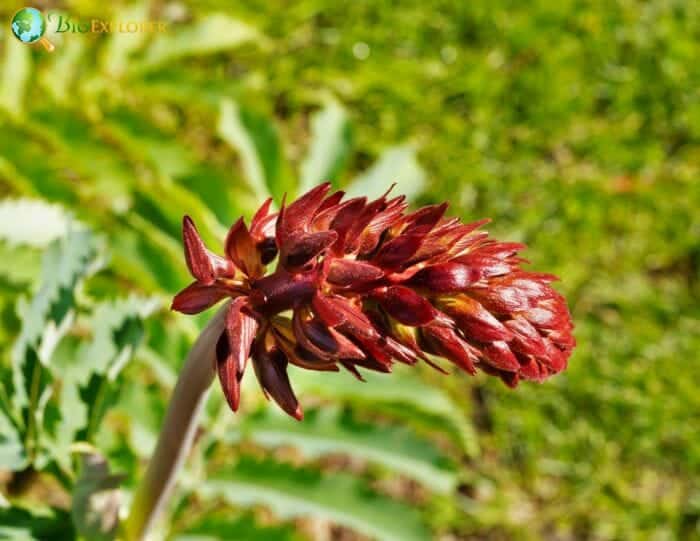
Honeyflower (Melianthus major) is a strikingly large subshrub in the Melianthaceae family. Native to the winter rain areas of South Africa, Namibia, and Lesothos, Honeyflower grows actively in winter and blooms from spring to summer.

Common names include tufted honeyflower, honeybush, don’t touch me. The common name “don’t touch me” refers to the somewhat unpleasant nutty and pungent scent produced by the leaves when touched and serves as a warning of the leaves’ toxicity as well.

The genus Melianthus means “honey flower” about the sweet nectar the flowers produce, and “major” the Latin epithet refers to the fact that this species is the largest of the 6 Melianthus species[1].
An erect (i. e., upright) and heavily branched shrub, typically up to 1.2-2 meters high, but sometimes up to 2.5 meters high.
Its leaves are alternately arranged and are made up of several leaflets with strongly serrated edges. Its flowers have a claw-like appearance with 4 dark brown to rust-red petals of various sizes.











